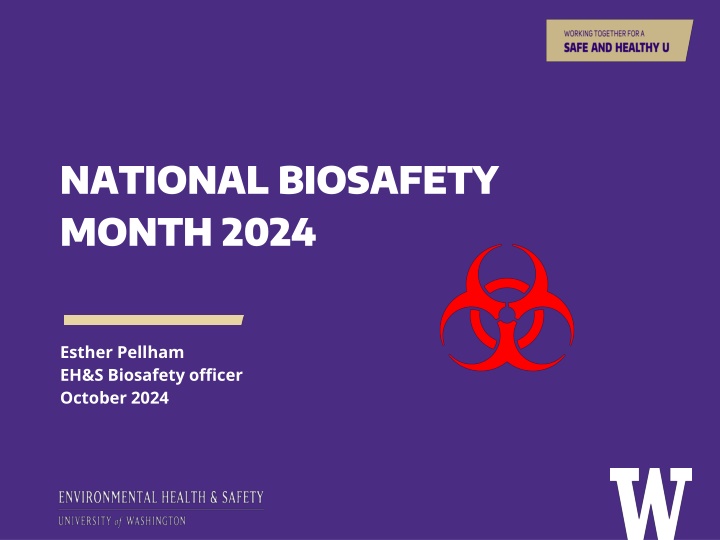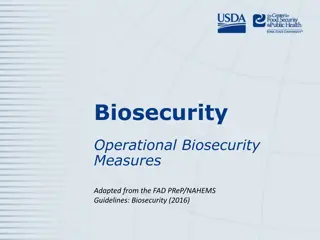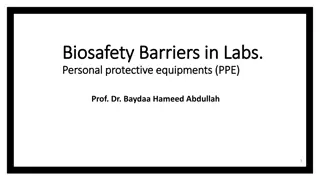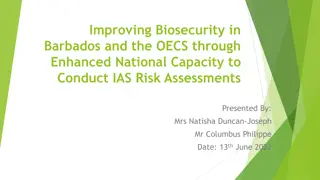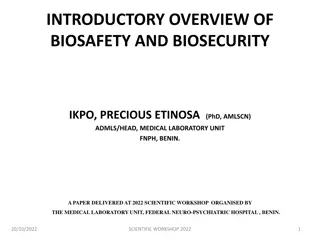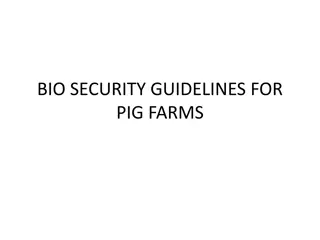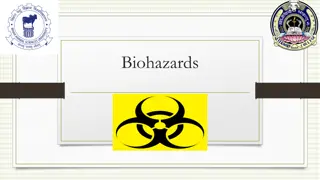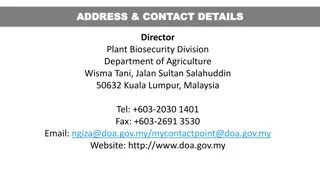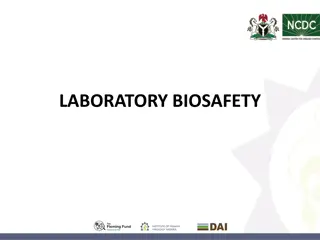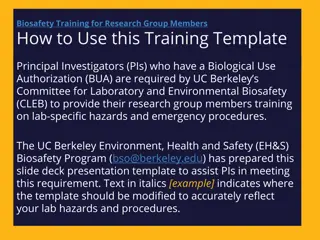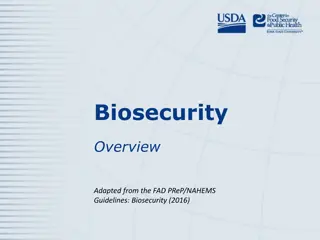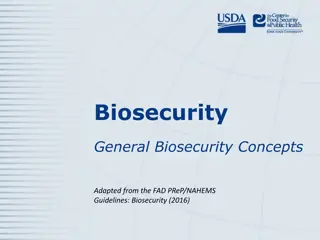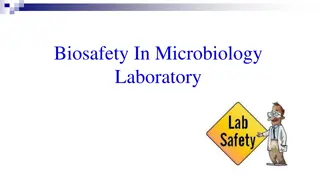Biosafety and Biosecurity Practices in 2024
Biosafety and biosecurity practices play a crucial role in research facilities to protect workers, communities, and the environment from biohazards. National Biosafety Month, initiated by the NIH in 2014, highlights the importance of focusing on biosafety policies, procedures, and practices. This year, the emphasis is on self-care for labs, including deep cleaning, disposal of expired materials, and proper disinfection. By fostering a healthy workplace and reducing risks of accidents, these practices contribute to a safe and productive research environment.
Uploaded on Mar 17, 2025 | 1 Views
Download Presentation

Please find below an Image/Link to download the presentation.
The content on the website is provided AS IS for your information and personal use only. It may not be sold, licensed, or shared on other websites without obtaining consent from the author.If you encounter any issues during the download, it is possible that the publisher has removed the file from their server.
You are allowed to download the files provided on this website for personal or commercial use, subject to the condition that they are used lawfully. All files are the property of their respective owners.
The content on the website is provided AS IS for your information and personal use only. It may not be sold, licensed, or shared on other websites without obtaining consent from the author.
E N D
Presentation Transcript
NATIONAL BIOSAFETY MONTH 2024 Esther Pellham EH&S Biosafety officer October 2024
WHAT IS BIOSAFETY? Framework for containment of biohazards Includes safe practices, safety equipment, facilities and training Protects the worker, community and environment Protects the research product 2
ABOUT EH&S BIOSAFETY FY24 533 principal investigators (PIs) with 655 active Biological Use Authorizations (BUAs) 353 BUAs reviewed 302 biosafety lab inspections (by PI) 450 rooms Online trainings completed: Biosafety: 2,597 Bloodborne pathogens (BBP): 5,321 3
NATIONAL BIOSAFETY MONTH Started in 2014 by the NIH Office of Science Policy Time to focus attention to biosafety practices, policies, procedures and inventory 5
2024 BIOSAFETY MONTH AT UW: SPA DAY OR SELF CARE FOR YOUR LAB Deep clean your lab: Reduce chances for contamination Fosters a healthy workplace Less potential for lab accidents Reduces visual fatigue and stimulates creativity! 7
2024 BIOSAFETY MONTH AT UW: SPA DAY OR SELF CARE FOR YOUR LAB Dispose of expired or unneeded reagents, supplies, and equipment Remove excess cardboard Choose appropriate disinfectant for biological agent UW Surplus website has list of items they cannot accept Clean up paper documents too 10
2024 BIOSAFETY MONTH AT UW: SPA DAY OR SELF CARE FOR YOUR LAB Clean freezers and refrigerators: Use trays and absorbent materials to collect water Sharp instruments cause damage; use a spray bottle of warm water or a blunt scraper to remove ice Keep or toss? Update inventory and dispose of appropriately Use fresh bleach solution to decontaminate surface 11
MAINTAIN YOUR CLEAN AND TIDY LAB Maintenance phase Schedule weekly/monthly/quarterly routine cleaning or lab chores Keep items off the floor Store supplies in plastic containers instead of cardboard Check expiration dates Remove waste and/or schedule waste pick-ups promptly Replace and launder lab coats on a routine basis and if contaminated 12
BIOSAFETY MONTH OUTREACH Email to principal investigators and lab managers with BUAs News post featured on the EH&S website/newsletter Featured on the Office of Research webpage Presentations at U-WIDE Health and Safety Committee, MRAM, and IBC meeting 13
HAPPY BIOSAFETY MONTH! Questions? ehsbio@uw.edu Thanks to the biosafety team! 14
